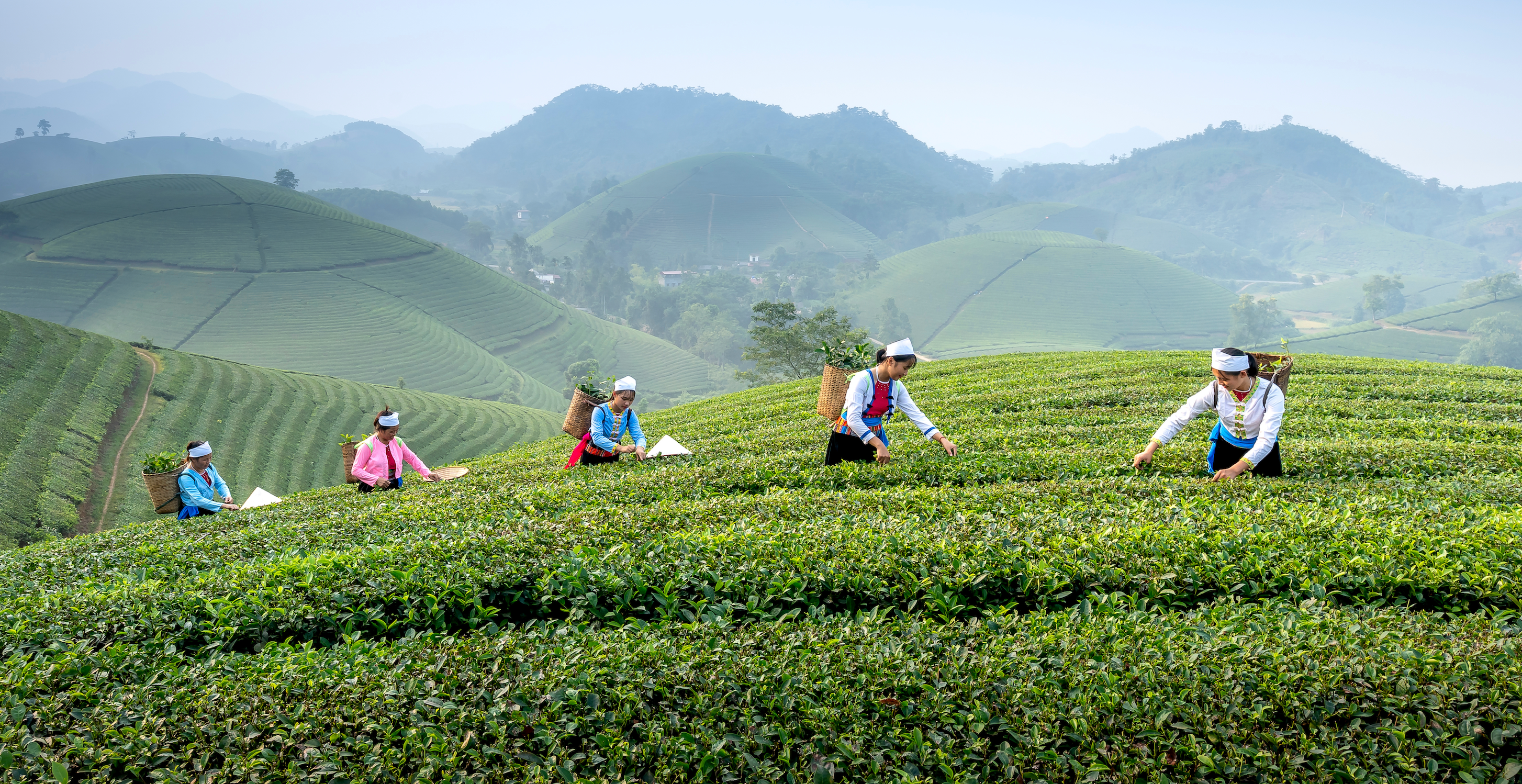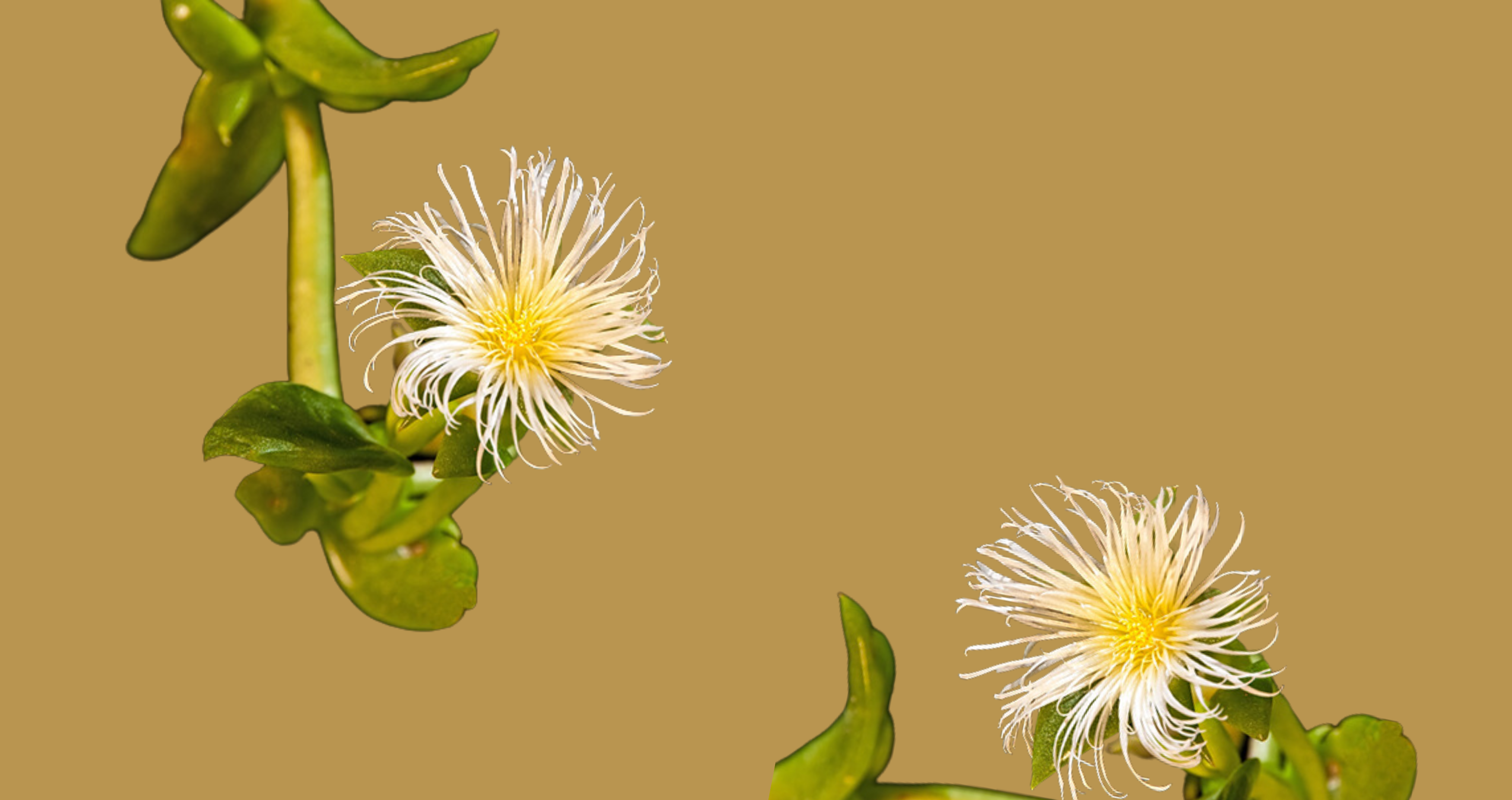
Why is Matcha suddenly everywhere?
If you have gone to any cafe this year chances are you would have seen baristas whisking green frothy liquid for a line of eager customers. The sharp rise of matcha in the Netherlands is particularly astonishing with it being the exception not the rule to find matcha on any cafe menu. While part of its popularity may simply be down to being the latest trend, there are some indications matcha is here to stay (get on board coffee lovers).
In this article we unpack what matcha actually is, where it comes from, how to use it, why you would want to try it, and answer some frequently asked questions about matcha.
Want to jump straight to our matcha collection? Check it out here.
What is matcha?

While you may have enjoyed a matcha, do you actually know what you’re drinking?
Matcha is a Japanese green tea powder made from finely powdered dried tea leaves. It has a slightly bitter, vegetal taste and a vibrant green colour that results from the leaves’ high chlorophyll levels. It’s been at the heart of traditional Japanese tea ceremonies for centuries.
The Uji region, situated west of Osaka, stands as one of Japan's premier and longest-established areas for Matcha Tea cultivation. Renowned for its pristine water and fertile soil free from pesticides, Uji enjoys an ideal climate nurtured by the mist from the nearby Uji and Kizu rivers. This mist keeps the tea plants adequately hydrated and minimises the threat of frost damage. Additionally, tea farmers in the region employ traditional methods like shielding the plants with reeds and bamboo sticks to protect them from excessive sun exposure.

In April, shortly after new shoots emerge, tea fields are almost completely covered to shield plants from direct sunlight. In Uji, a traditional method involves laying reeds over bamboo sticks, a practice now rare among farmers. Shading enhances nutrient storage and chlorophyll production, crucial for l-theanine, the amino acid responsible for tea's umami flavour. Cultivating in shade preserves the tea's delicate taste.
Harvesting
The first harvest of green Matcha Tea begins in late April and concludes by the end of May. After harvesting, new leaves sprout and are picked in late June and early July. A third harvest occurs in August, each yielding tea of diminishing strength, colour, and flavour. Premium quality tea consists only of the topmost leaves and the tip of the stem from each harvest.

Different grades of matcha
Not all matcha is created equal. Matcha is categorised into several grades based on quality, cultivation methods, and intended use. Whether you're seeking the perfect matcha for a traditional tea ceremony, daily enjoyment, or culinary creations, understanding these grades can help you choose the right matcha for your needs.
Ceremonial Grade Matcha (what we stock)
- Quality: Highest grade of matcha, prized for its vibrant green color, smooth texture, and delicate flavor.
- Growing and Processing: Grown in shaded conditions to enhance chlorophyll and amino acid content, particularly L-theanine. Hand-picked during the first harvest (first flush) of the season.
- Taste: Has a rich umami flavor with subtle sweetness and no bitterness. It's characterized by a creamy mouthfeel and a lingering aftertaste.
- Use: Primarily used in traditional Japanese tea ceremonies (chanoyu) due to its exceptional quality and flavor. Can also be enjoyed on its own or used in high-end culinary applications.
explore our ceremonial grade matcha collection here.


Premium Grade Matcha:
- Quality: High-quality matcha that is slightly less expensive than ceremonial grade.
- Growing and Processing: Also grown in shaded conditions and harvested during the first flush. It undergoes similar processing methods as ceremonial grade matcha but may include slightly older leaves.
- Taste: Offers a balanced flavor profile with a good mix of umami, sweetness, and a slight astringency. It's smooth and enjoyable for drinking.
- Use: Suitable for daily consumption as a high-quality drinking matcha. It can also be used in culinary recipes where a robust matcha flavor is desired.
Culinary Grade Matcha:
- Quality: Lower grade compared to ceremonial and premium grades, more affordable and often used in cooking and baking.
- Growing and Processing: Grown under full sun conditions without shading, resulting in a slightly different flavor profile and lower levels of L-theanine.
- Taste: Has a stronger, slightly bitter flavor compared to higher grades. It may lack the smoothness and complexity found in ceremonial and premium grades.
- Use: Ideal for culinary purposes such as making matcha lattes, smoothies, desserts, and baked goods. It provides a robust matcha flavor that holds up well when mixed with other ingredients.
Ingredient Grade Matcha:
- Quality: Lowest grade of matcha, primarily used in mass-produced products and instant tea mixes.
- Growing and Processing: Often grown with minimal care and processing compared to higher grades. May include leaves from later harvests and lower-quality leaves.
- Taste: Can be quite bitter and lacks the nuanced flavors and smoothness of higher grades.
- Use: Mainly used in industrial food production for flavoring and coloring. Less suitable for drinking as a standalone tea due to its harsh flavor.
How to use Matcha

Before we get started, lets get to know some terminology of the tools of matcha
Chasaku: bamboo spoon
Chawan; special bowl for matcha
Chasen: bamboo whisk
Matcha Latte
1. Put 1 level tsp Matcha in a Matcha Bowl.
2. Add a little water (about 30 ml) and whisk with the help of a Matcha whisk until creamy ( Z-shaped movements).
3. Top with frothed milk and enjoy.
Snacks
We stock a range of matcha infused chocolates, enjoy a decadent strawberry matcha, or a fibre packed roasted almond flavour, try out a mushroom infused blend, or go for the classic intense matcha. The ultimate treat-your-self companion.

Cooking
The team at health bar have curated an impressive selection of matcha recipes, check them out here.




Matcha FAQs
What is the best way to consume matcha?
- Matcha is traditionally enjoyed as a hot tea by whisking the powder with hot water until frothy. It can also be used in lattes, smoothies, or added to recipes for a boost of flavor and nutrition.
How do you drink matcha for beginners?
- For beginners, start by whisking 1 teaspoon of matcha powder with about 2 ounces of hot (not boiling) water until smooth and frothy. Gradually adjust the matcha to water ratio based on your taste preferences.
How should matcha be served?
- Matcha is traditionally served in a bowl (chawan) using a bamboo whisk (chasen) to froth the tea. It can be enjoyed plain or with a sweet treat like Japanese wagashi.
Is it better to drink matcha with milk or water?
- It depends on personal preference. Matcha with water is more traditional and preserves the tea's delicate flavor. Matcha with milk creates a creamier texture and is popular in lattes.
Is matcha healthier than coffee?
- Matcha contains caffeine like coffee but also provides antioxidants and L-theanine, which can promote relaxation and mental clarity without the jittery feeling sometimes associated with coffee.
Is it OK to drink matcha everyday?
- Yes, matcha can be consumed daily in moderation. It's rich in antioxidants, vitamins, and minerals, but it's important to balance it with a varied diet for overall health.
Are there any negative effects of matcha?
- Excessive consumption of matcha (like any caffeinated beverage) may cause jitteriness, upset stomach, or sleep disturbances in sensitive individuals. Moderation is key.
Is matcha good for skin?
- Matcha's antioxidants may help protect the skin from damage and promote overall skin health. Some skincare products use matcha for its beneficial properties.
Can I drink matcha on an empty stomach?
- Yes, matcha is generally gentle on the stomach and can be consumed on an empty stomach. It may even provide a gentle energy boost.
Is matcha better, hot or cold?
- Both hot and cold matcha beverages are enjoyable. Hot matcha preserves its traditional flavour, while cold matcha is refreshing and perfect for warmer weather.
Is matcha better than green tea?
- Matcha is a type of green tea but differs in cultivation, processing, and consumption. It's more concentrated in nutrients and antioxidants compared to steeped green tea.
Does matcha stain teeth?
- Matcha can potentially stain teeth due to its vibrant green color. It's recommended to rinse your mouth with water after consuming matcha and maintain regular oral hygiene.
What color matcha is better?
- Higher quality matcha tends to have a vibrant, bright green color. This indicates fresh, young leaves with higher chlorophyll and nutrient content.
A final word
In this article, we've explored the basics of matcha: its origins, cultivation, usage, and the various grades that cater to different tastes and needs. From its deep roots in the Japanese tea ceremonies of the Uji region to its modern-day applications in lattes, matcha offers a unique blend of tradition and versatility.
By understanding the rich history and diverse applications of matcha, you can appreciate its journey from ancient tea fields to contemporary cafes. Whether you're new to matcha or a seasoned enthusiast, there's always more to discover and enjoy about this remarkable green tea powder.
Explore our matcha collection here.



Commenta
Questo sito è protetto da reCAPTCHA e applica le Norme sulla privacy e i Termini di servizio di Google.